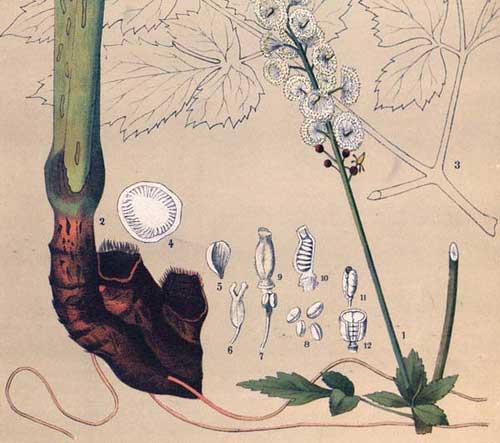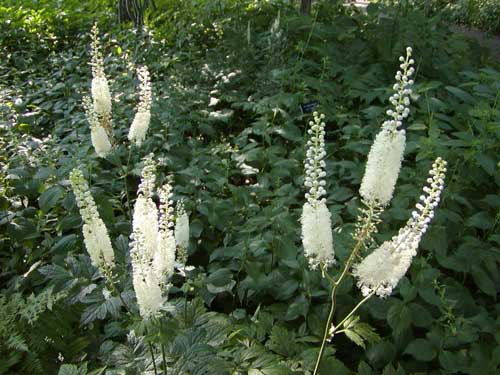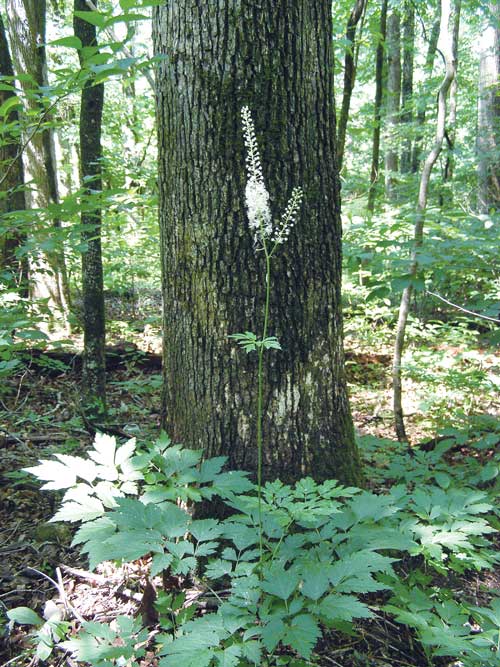
|
The following article was first published in 2013 for my colleagues in the Avena magazine. |
|
||
| Our Pages ABOUT CONSTITUTIONAL MEDICINE
|
I want to get Black Cohosh out of the box because I think that to narrow it down to a ‘menopause herb’, or even a ‘woman’s herb’ misses its full character like naming a condition can miss all the complexity of the person underneath it. That said, Black Cohosh has proven very popular all over the world for one particular reason, menopause, and we firstly have to give due credit to the basis of its success in this realm. To paraphrase the esteemed Master Bone’s own citations from the literature (the honourable process of quoting the quotes from other people known as ‘research’) Black Cohosh does not contain estrogens and nor does it directly alter estrogen levels however compounds within the plant act as selective estrogen re-uptake modulators (SERMs) and it is this which is proposed to be the reason it helps reduce the symptoms of menopause… Black Cohosh was tested on 28 menopausal women with 80% showing good or very good efficacy in relation to the symptoms measured… it was not found to alter the hormones: estradiol, prolactin, follicle-stimulating hormone (FSH) or leutenising hormone (LH)… a review of clinical trials shows that Black Cohosh has therapeutic effectiveness for moderate to severe neurovegetative symptoms of menopause… good tolerability and low risks of side-effects have also been confirmed. That much said about the science then there is the controversy over Black Cohosh and its safety in women who may be susceptible to breast cancer. You may read the literature and form your own views but from where I sit this particular matter reads like excessive wind generated from Black Cohosh clearly doing ‘something’ to hormones. The medical mind thinks about herbs that, if they can do something then they are bound to be able to do something bad -- after all that’s what happens with all the drugs that are likewise shown to do anything – but this is not necessarily true. Let’s move on from adding to the world of unnecessary worry to talk about how else Black Cohosh may help to those who are caught in the misery of suffering -- start with its history. This herb was sacred to the American Indians for many thousands of years before German scientists proved it stopped hot flushes so what did the Indians use it for exactly? It turns out that Black Cohosh was a revered healing herb, especially for pain. The pain of childbirth certainly, but also the pain of ageing, the pain of Winter’s cold seeping into the joints, the pain of loss in times when life could be brutally cut short. Black Cohosh was a revered herb because of its power to ease deep, real, immediate pain. Part of this was passed on to the Eclectics; part of that in turn has been passed on to us today…
Now I want to recount a little of what started my own ‘opening-up’ to Black Cohosh. Initially using it, as taught, as a herb for menopause I found that a significant number of women would get a particular type of headache if I was too generous with the dose. I read elsewhere that others had observed the same reaction and had, like me, concluded that it simply meant the dose was too high. But I wondered about why this happened and what did it mean? These thoughts were bought into sudden clarity when I read the following monograph on Black Cohosh from the marvellous Felter and Lloyds King’s Dispensatory from 1898. ‘Few of our remedies have acquired as great a reputation in the treatment of rheumatism and neuralgia as Cimicifuga. Professor King's own statement of his use of it is as follows: "The saturated tincture of this article was recommended by me in acute rheumatism, in the New York Philosophical Journal, as early as in the year 1844; to be given in doses of 10 drops every 2 hours, gradually increasing to 60 drops, or until its action on the brain is observed, which action must be kept up for several days; it almost always removes the disease permanently, especially if it is a first attack." The experiences of other physicians since that day give abundant evidence of the truth of his statement. I am happy to add my voice to that number because in practice I have found that this is indeed the case. That if the patient is suffering with acute pain in the nerves or the joints and you give Black Cohosh in increasing doses up to the point that a headache is noticeable and then at that point back down to the previous level that there is a rapid, and often quite remarkable, clinical response. For example I have now used it in this way for severe polymyalgia rheumatica on several occasions with terrific results, which as you may have experienced is a dastardly disease that can defy attempts to freeze it out with heavy steroids. As you can see, Professor King puts the upper limit at 60 drops, or 3 mls of the tincture every two hours in an acute attack of painful rheumatism or neuralgia – a very high dose. I have not yet personally had someone reach those doses without ‘the action on the brain being observed’. Once that odd, piercing frontal headache happens, you know you have reached the threshold, you tell the patient to ease back to the previous level but not to stop, then, watch what happens to their pain. You must be seeing the patient within a week at most as this is a short term treatment only....
What follows is another excerpt from the past that gives us another quite different view of Black Cohosh. It was published in the Bulletin of the Lloyd Library of Botany, Pharmacy and Materia Medica in 1931 and it comes from a letter written nearly a century earlier in 1823 by one Dr Gardner. It is his own testimony from his own experience. 'Shortly after commencing the use of this remedy (Black Cohosh), the hectic paroxysms (spasms) which had attended me for some time previously, were entirely checked. The nocturnal evacuations (night sweats) from the surface of the body began to diminish. The evaporation of a fluid from the vessels of the lungs and bronchia, resembling pus in appearance, was speedily arrested. The cough became less troublesome and frequent. My pulse, which for some time before was never lower than from 100 to 120 pulsations to the minute, was reduced to the minimum standard. The pain in my right breast and side left me. My strength and appetite began to improve. I speedily abandoned the use of all medicines or other means. A period of 12 months of more had elapsed from my initial ill-health to the time of using this medicine. It certainly possesses the power in an eminent degree of loosening arterial action, and at the same time imparting tone and energy to the general system!’ I think this candid account gives an excellent example of the power that Black Cohosh possesses to relieve even long-standing conditions where the characteristic hallmarks of ‘depletion, constriction and pain’ show the welcome sign to its unique actions. Thomas Bartram writes of Black Cohosh 'for melancholia, hysteria and nervous depression' and some years ago I listened to a talk from Matthew Becker, a contemporary herbalist practicing in Boulder, Colorado where he described some compelling experiences of his own in using Black Cohosh to allay deep depression and loss of hope and creativity in his patients. Dose is such a critical factor for so many of our herbs. The great mad genius Paracelsus famously said ‘the dose makes the poison’ – meaning the wrong amount can do harm, the right amount can heal. We need to have open minds and open dialogues about what may work best and always be most wary of dogma and inflexibility. I’ve mentioned the very high doses that may be used with benefit for acute joint and nerve pains. In regard to its effects on the mind I think a much smaller dose may be better than a large one, even down to the level of just drops per day. That said I will sometimes use a high doses of Black Cohosh for a man gone too far to the ‘cold’ with a depressed mood… Sometimes I just know the amount to use, call it instinct, but I’m honest enough with myself to know when I don’t know and in this case it is far better to give the patient a range of doses to work with so they may find the amount that they feel is actually working… because this is the thing with Black Cohosh -- whether it be a ridiculous number of hot sweats at night, a diabolical pain in the joints or the nerves, a blown mood, whatever, when you get this herb right you feel it working, fast. This is the point I want to make here -- that Black Cohosh is not a herb to be taken too long on faith. As the practitioner you firstly have to see the kind of suffering that those roots have gathered up all that power to shift, then work with it to get the dose -- take it or give it until it clearly works and see for yourself what she can do –then she’ll be your friend for life.
|
|
|
© 2011 R.J.Whelan Ltd



